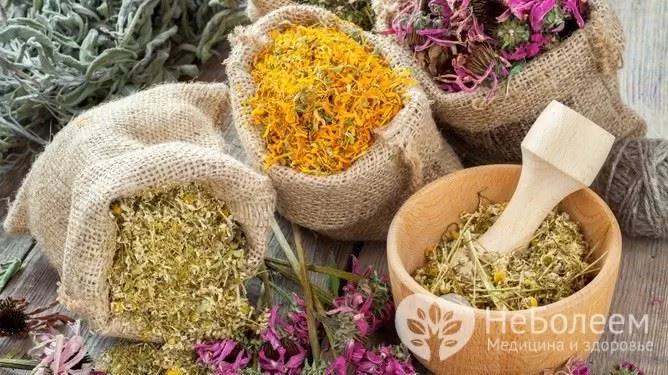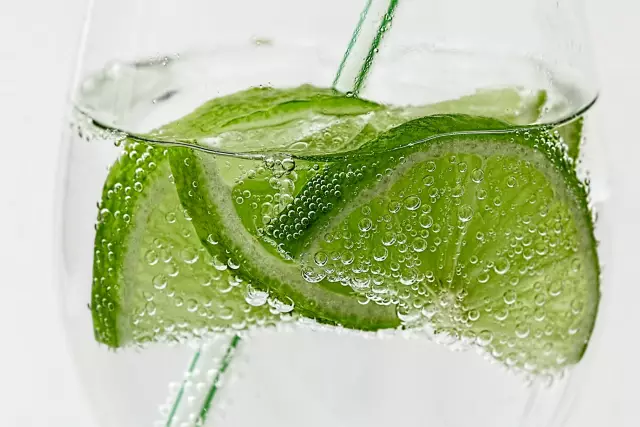- Author Rachel Wainwright [email protected].
- Public 2023-12-15 07:39.
- Last modified 2025-11-02 20:14.
Healthy relaxation: how to take phyto baths?
Bathing in decoctions of medicinal flowers and plants (phytovanna) has been widespread since the time of Cleopatra, who knew a lot about everything related to beauty and health. And today phyto baths are a simple and affordable remedy that allows not only to relieve nervous tension, but also to cure many diseases. Herbal baths are especially effective in treating colds, osteochondrosis, radiculitis, skin diseases, as well as diseases of the urinary tract and blood vessels.
In this article, we'll show you how to take phyto baths with health benefits.

Source: depositphotos.com
The benefits of herbal baths
A herbal bath is referred to as a treatment that complements drug therapy. The healing effect is based on the effect on the skin of hot water and biologically active substances that make up medicinal herbs. Useful components (phytoncides, vitamins, flavonoids, terpenes) penetrate the skin into the bloodstream, spreading throughout the body and sometimes acting even more strongly than when entering through the gastrointestinal tract.
In addition, a herbal bath is a sure way to restore the nervous system suffering from overload. Hot water relaxes, helps relieve muscle spasms, due to which tension is replaced by calmness, and sleep and mood return to normal.
Fitovanna activates the elimination of toxins and toxins, which makes it especially useful for those who want to lose weight. Plants that promote weight loss include chamomile, peppermint, oregano, sage, rose hips, calendula, linden, celandine, etc., or collections from them. For example, to prepare a decoction for a bath that helps weight loss, use mint, sage, oregano and calendula leaves (in a total amount of 200 g) or a mixture of thyme (150 g) and celandine (1 tsp). To obtain a lasting result, a course of 10-15 procedures is carried out, always in combination with proper nutrition and physical activity.
Types of phyto baths for diseases
Depending on the type of plant, there are baths with therapeutic, health-improving, sedative and cosmetic effects, but most often the effect on the body is complex, versatile. Consider phytovanne recipes used to treat common diseases.
- With radiculitis, rheumatism, arthritis, osteochondrosis: pour 400 g of spruce branches with 5 liters of boiling water. Insist for 4 hours and strain into the bath.
- For varicose veins, furunculosis, burns: pour 500 g of calendula with 5 liters of water and boil for 10 minutes, drain, pour into the bath.
- For purulent ulcers, weeping eczema, neuroses: boil 100 g of chamomile flowers in 1 liter of water for 5 minutes, leave for 2 hours, then add to the bath.
- For heart disease, insomnia: 200 g of valerian pour 1 liter of boiling water, insist in a warm place for 12 hours, strain, add to the bath.
- In case of diseases of the gallbladder and liver: fill a 5-liter saucepan with 2/3 oat straw and boil for an hour on low heat. Then add to the broth 50 g of grass of a hill hodgepodge, leave for about an hour and pour into the bath.
- To relieve headaches and restore strength: pour 200 g of mint or lavender into 1 liter of hot water, leave for 5-7 minutes, strain and add to the bath.
It is recommended to take a bath in a calm mood, throwing all worries and worries out of your head if possible. Within half an hour after the procedure, you should not immediately start household chores - it is recommended to take a little rest and enjoy the relaxed state presented by warm water and fragrant herbs.

Source: depositphotos.com
How to take phyto baths correctly?
A herbal bath is a simple procedure, it is easy to carry out at home. However, to ensure maximum health benefits, phytovanna is taken with certain guidelines.
- Before taking a bath, you need to cleanse the skin of dirt and keratinized particles with a washcloth and odorless soap - this way the beneficial substances are absorbed better. Do not rinse with water after the procedure.
- You should take a bath 2 hours after a meal so as not to disturb digestion. It is desirable that the bladder and intestines are empty at the same time.
- The water temperature should not exceed 39 ºС. The duration of the procedure is no more than 20 minutes.
The course of herbal baths is usually 10-12 procedures. Despite the beneficial effect of such a bath, you cannot take it every day, otherwise the body may be overloaded. It is better to alternate the days of treatment and rest (with a maximum break of 5-6 days), focusing on your well-being.
People with diseases of the cardiovascular system, acute inflammatory processes, diabetes mellitus, pulmonary tuberculosis, epilepsy, allergies, as well as women who are 4-9 months of pregnancy should choose other methods of treatment. Taking hot baths in these conditions is prohibited.
YouTube video related to the article:

Maria Kulkes Medical journalist About the author
Education: First Moscow State Medical University named after I. M. Sechenov, specialty "General Medicine".
Found a mistake in the text? Select it and press Ctrl + Enter.






